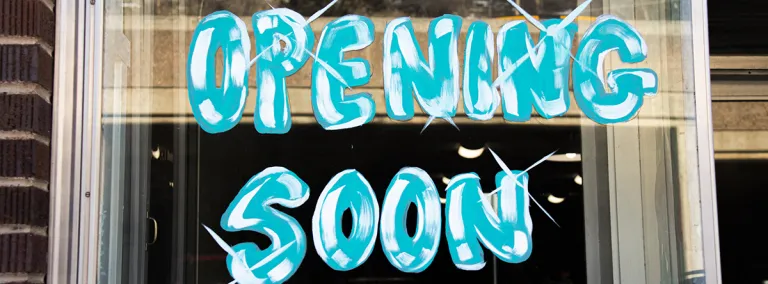Building from the (under)ground up
Economic development in Lead, SD attributed to several parallel factors
Take a drive down Main Street in Lead, South Dakota, and you’ll see a town revitalized. New businesses announce their arrival in vibrant window paint across once-vacant storefronts: “Opening Soon.” Bright yellow building permits are posted in windows of residential districts, signs that residents are building up their homes and digging their roots deeper into this mountain town. Stroll down a sidewalk, and you’ll be greeted with new faces, some simply visiting and others here to stay.
“Just take a walk downtown, and you’ll see it,” said Mike Stahl, Lead city administrator. “People are taking a chance on Lead.”
The growth of Lead is not simply anecdotal. In 2019, for the first time in recorded history, the City of Lead exceeded one million dollars in sales tax revenue. Against a budget of $730,000, Lead businesses drew in $1,018,083. This unanticipated breakthrough came after a decade of steady annual increases in sales tax revenue.
Stahl says that while the city’s ongoing economic growth is due to many factors running in parallel, the presence of Sanford Underground Research Facility (Sanford Lab) has given many a renewed confidence in Lead’s future. An internationally recognized laboratory, Sanford Lab brought new life to a community that had lost its major economic driver after the Homestake Mine closed in 2002.
“After the mine closed, the first thing I saw was the community’s desire to reinvest in Lead,” said Stahl. “Sanford Lab coming in gave a lot of people confidence that this town was here to stay.”
Creating and sustaining jobs
Currently, more than 200 people are employed by Sanford Lab—that’s 25 percent more than were working for Sanford Lab just two years ago. The growth directly correlates to growing experiment activity, said Mike Headley, executive director of Sanford Lab.
“Beyond the numbers, it is the type of jobs that Sanford Lab is creating and sustaining that makes an impact on Lead,” Headley said. “These jobs are high-tech, knowledge-based positions that bring engineers, scientists, senior managers and professionals to the area. These jobs attract people who are becoming leaders in the community, participating in government and other activities that advance business and commerce in the Black Hills region.”
Workforce development
Sanford Lab also invests in education and workforce development, from kindergarten to PhD programs.
Sanford Lab’s Education and Outreach (E&O) program, a partnership between Sanford Lab and Black Hills State University (BHSU), reaches educators across the state and has a visible impact throughout the region.
In addition to hosting field trips, building curriculum units and giving in-school presentations, the Education and Outreach team provides professional development programming for South Dakota STEM educators. In 2019 alone, the E&O team reached more than 13,000 students and nearly 500 educators in this region. In 2020, the E&O team’s work became a statewide model for science education and workforce development.
“For our team, playing this role in South Dakota means that our work has been well-received in the state and, more importantly, is effective at supporting our fantastic educators,” said Deb Wolf, E&O director.
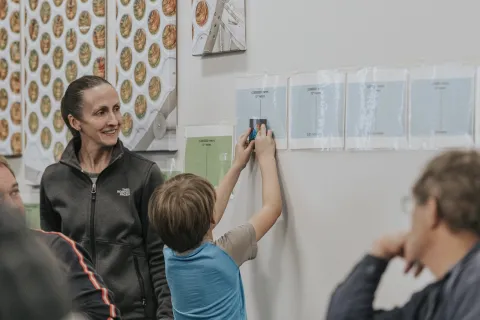
Sanford Lab is also a driving force behind the creation of the PhD programs at South Dakota School of Mines and Technology (SD Mines) and the University of South Dakota. With the momentum of Sanford Lab, the Board of Regents approved the shared program in 2012. Today, the Ph.D. program has 33 students, with 4 graduates of the program.
“By hosting world-leading experiments at Sanford Lab, we provide an opportunity for students at South Dakota universities to join international collaborations while staying in the state,” said Headley. “The collaborations offer numerous opportunities for students to work on a PhD program and at a laboratory right here in South Dakota.”
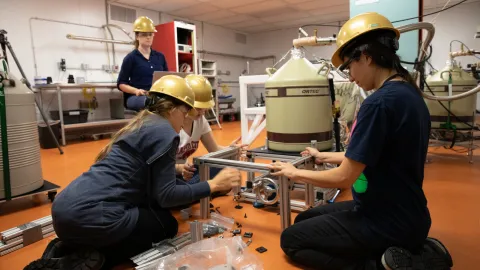
Programs like Sanford Lab internships, the Davis-Bahcall scholars and BHSU Underground Campus are examples of opportunities that move the education system forward while giving students the opportunity to participate—at an early stage in their education—in world-leading research.
Economic investment
Since operations began in 2008, Sanford Lab has spent more than $222 million in South Dakota.
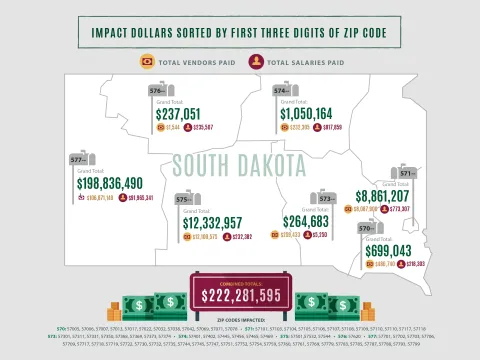
economic impact study indicates that over the next decade, LBNF/DUNE will generate nearly $1 billion dollars in economic output within South Dakota. The ongoing work at SURF and the future construction of the LBNF/DUNE project will create more than 1,800 jobs in South Dakota over a 10-year period.
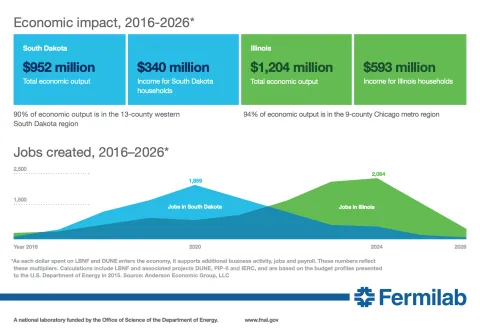
Bringing it home
“Lead is a true transformation, a community that is ready to be rediscovered,” Stahl said. “It’s no singular thing; rather, it’s a lot of things coming together. Everything that happened with Sanford Lab has moved things forward. People know this town is going to grow, and they want to be around as it does.”
